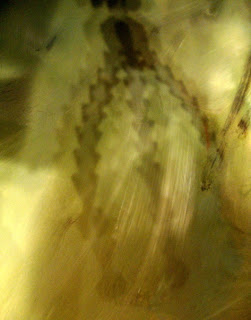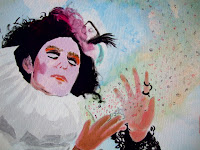Flight
As morning broke, Ralph lay prone, wide awake as he had been the entire night, his mind dizzy from too much thinking. With considerable effort he finally sat up. There was only one other man in the bunkhouse now, a squat man with very small ears and brown, greasy hair.
“What’s your name?”
“Kand. Ralph Kand. And you?”
“Hans. Did you just arrive? This is not a place you want to stay.”
“I don’t plan to,” Ralph said, his mouth bitter with a nostalgic taste.
“Good. I’m leaving, too,” Hans said. “I’ll go mad if I stay with this rabble.”
Ralph squinted, slats of sunlight now filling the room. “You can get us out of here?”
“I have tin snips. I’ve been here three weeks. Tonight there will be no moon. I found a space in the outer fence where they have no guards and no lights. I will show you.”
It was well past midnight when Ralph and Hans slipped from their bed to the door. They could hear a woman crying in the dark as they eased their way out the door, keeping to the shadows. Hans had said he'd been told it was not intended to be a prison, just a means of confinement while they processed the mass of fugitives from the east. Nevertheless they both knew it would be disastrous to get caught making an escape.
When they reached the fence, Ralph knelt and lifted the bottom wire. It was loose. It didn't even need to be snipped for them to scrunch under it. Once on the other side they were soon in a clump of trees and brush across the unpaved outer road.
"Now what?" Ralph said.
Hans vigorously shook his loose trousers and jacket to knock the dirt off, threw the tin snips into the weeds, then patted himself down. Ralph followed, in an effort to make himself presentable.
"We walk. Need to put some distance between us and the camp."
For a short while they trudged through the countryside in silence, the only sound being the snapping of twigs or whooshing of bramble against their legs.
"We have to go west," Ralph said. "We can't stay in Poland."
They crossed a road and went into another batch of trees. "Let's find a place to rest," Hans said.
Ralph, too, was weary, exhausted, but determined to press on. Hans lifted his eyes to Ralph's to meet his gaze. Ralph turned and limped on as he reluctantly followed.
Ralph's thoughts went to his days at the brewery before the Russians came. How easily they joked then. How easy it all seemed, drinking vodka and laughing. What a chilling effect the loss of freedom had on everyone, a dark blanket that smothered men's souls.
"Shhh!" Ralph gestured with his hand for Hans to halt. All the first sounds of dawn were springing to life now, birds chirping, rejoicing, oblivious to danger. The rippling of a nearby stream formed a melodic undertone. In the distance a steam locomotive pounded the rails. A whistle blew. Ralph's eyebrows lifted.
"We can't catch a train. We have no money and no papers," the squat man said.
"It's the fastest way out of here. We have to do what we can."
Ralph waved his hand in the direction of the stream, found a small rocky place where he could kneel, splashed water in his face. He cupped his hands and began to drink. "This is good."
"Lucky." Hans said. "I was thirsty, too."
"We'll find the tracks and follow them to a town. Maybe we can find a way --"
And like that they both understood the mission. "We need to rest first. We have a long ways to go."
Hans was carrying a small pack which had extra clothes in it. He lay down and used it as a pillow. Ralph found a grassy patch under the trees lay on his side, head resting on his arm. They were both quickly sleeping.
The sun was straight overhead when they wrangled themselves up to get started again. Both were feeling their hunger now. After a modest hike they reached the tracks, gazed southwest and trundled along. After a short time they came upon a farmhouse. An old Polish man with round face and bushy eyebrows was seated on the porch whittling.
CONTINUED
NEXT WEEK: TO WROCLAW, PRAGUE AND AUSTRIA


















































